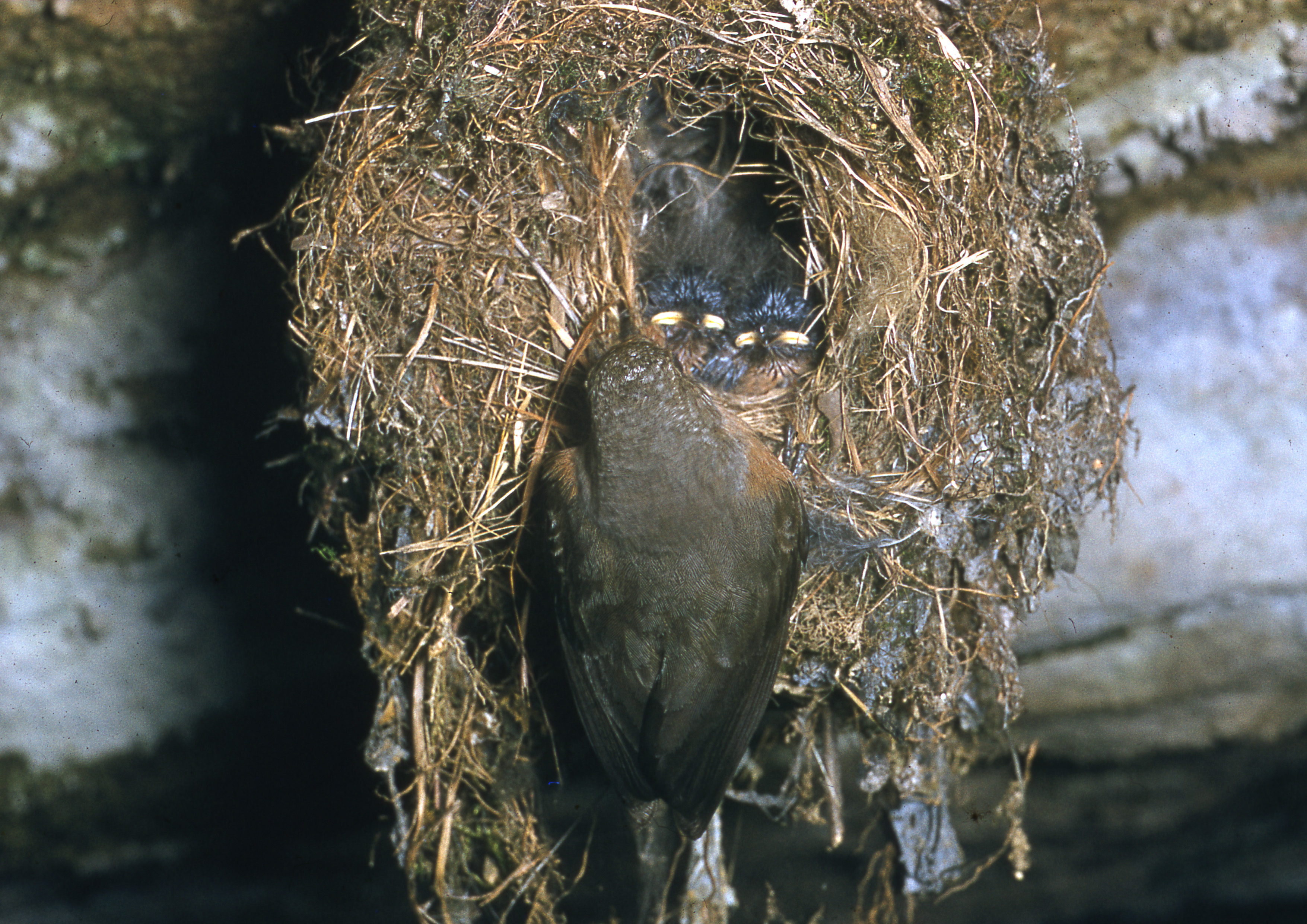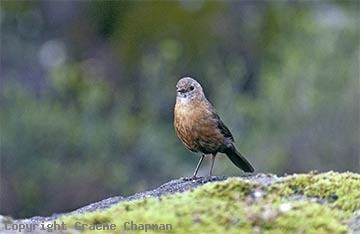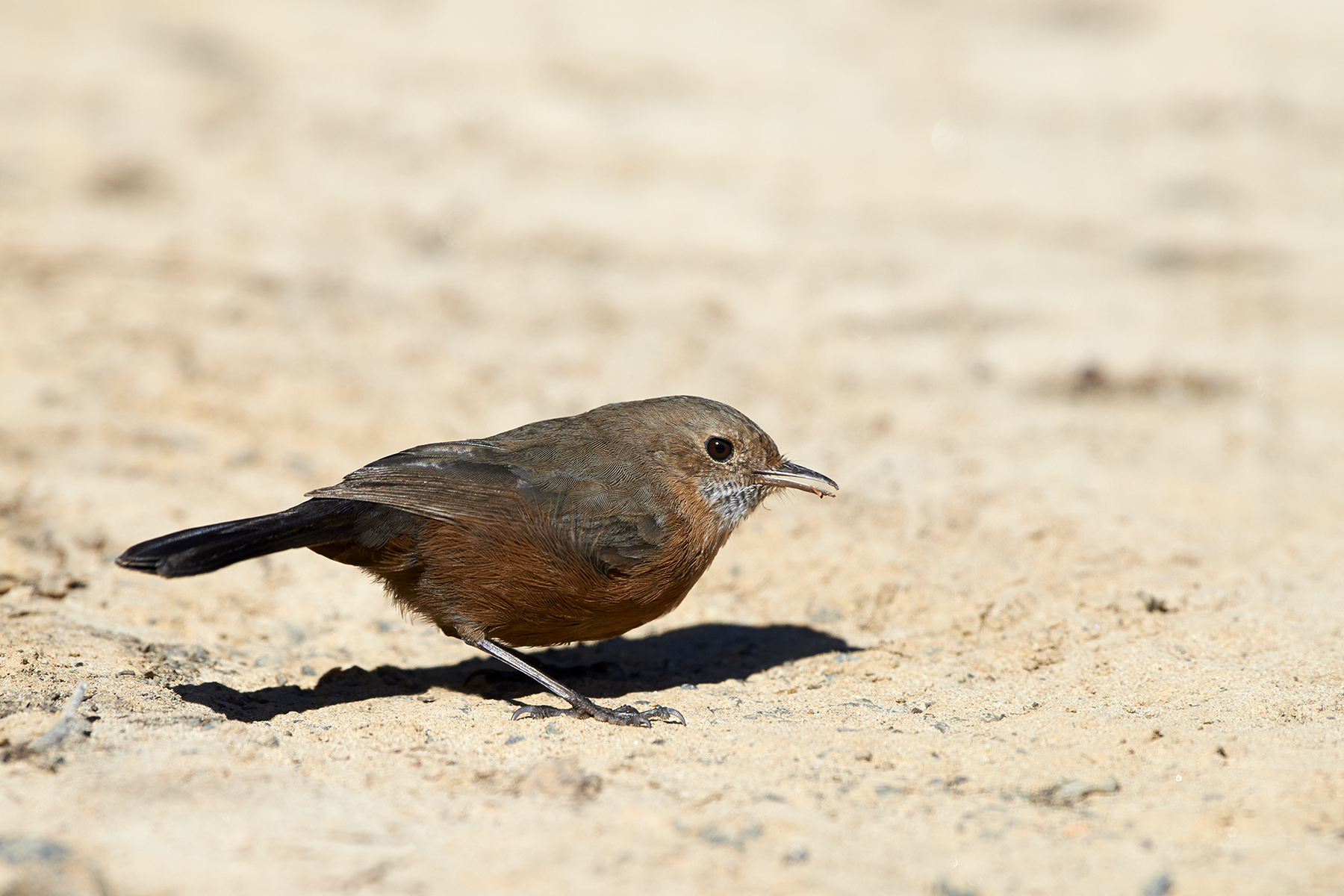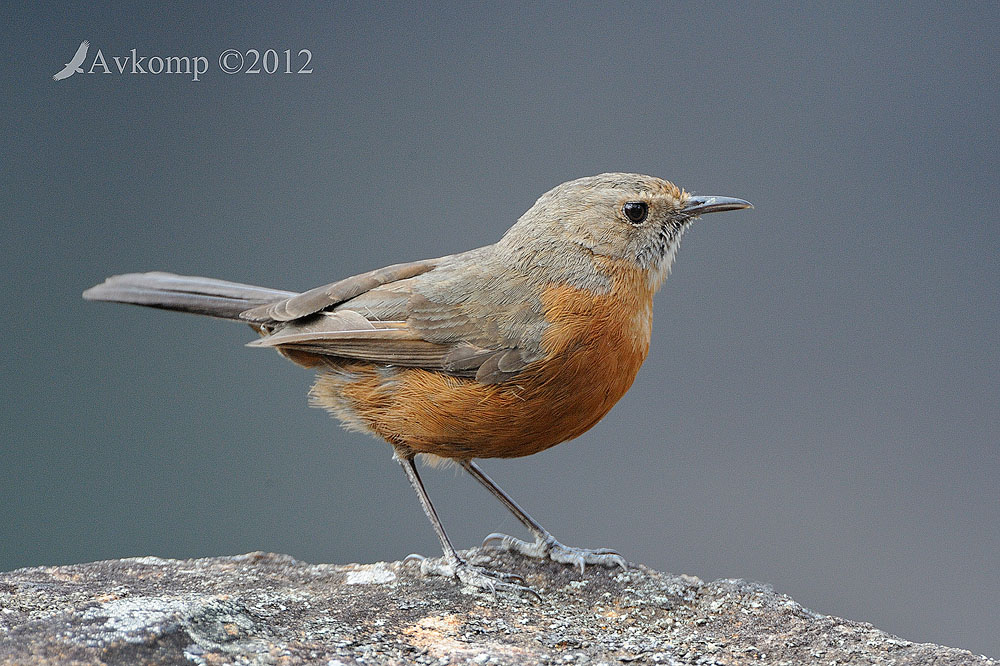
Origma solitaria
SUBFAMILY
Acanthizinae
TAXONOMY
Sylvia solitaria Lewin, 1808, Parramatta, New South Wales,
Australia.
OTHER COMMON NAMES
English: Origma, rock robin, cave-bird; French: Origma
des rochers; German: Steinhuscher; Spanish: Origma
Piedra.
PHYSICAL CHARACTERISTICS
5.5 in (14 cm); c. 0.4 oz (12 g). Brown back with reddish
brown underparts.
DISTRIBUTION
Very restricted range in sandstone and limestone country
around Sydney, New South Wales.
HABITAT
Scrubby forest and heathland, especially near bare rock faces
and cliffs.
BEHAVIOR
Solitary, but easily seen. Song is described as repeated
“good-bye,” also penetrating, rasping and twittering calls.
Sedentary.
FEEDING ECOLOGY AND DIET
Typically feeds on rock surfaces or bare ground, including
parking areas, etc. Gleans insects, and other arthropods, and
occasionally seeds. Sometimes takes insects from bark or captures
them in flight.
REPRODUCTIVE BIOLOGY
Breeds August to December. Nest is placed in a cave, or cleft
in the rock, but also in man-made structures such as mineshafts.
It is made of rootlets, bark, grass and moss and is spherical
with a side entrance. Three or four white eggs.
CONSERVATION STATUS
Not threatened.
SIGNIFICANCE TO HUMANS
The only bird endemic to the state of New South Wales.
Photo Gallery of - Rockwarbler




 Animalia Life
Animalia Life